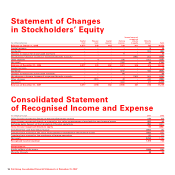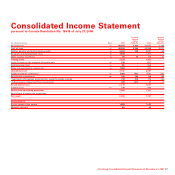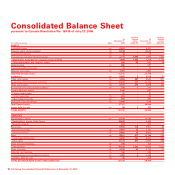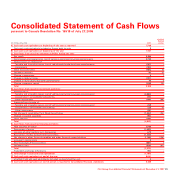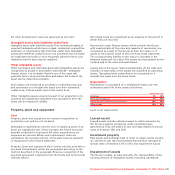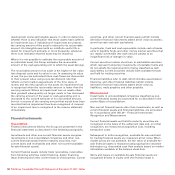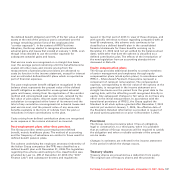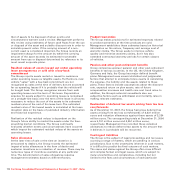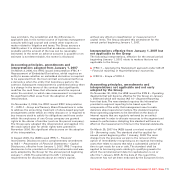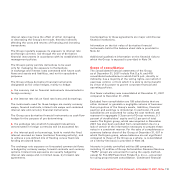Chrysler 2007 Annual Report Download - page 106
Download and view the complete annual report
Please find page 106 of the 2007 Chrysler annual report below. You can navigate through the pages in the report by either clicking on the pages listed below, or by using the keyword search tool below to find specific information within the annual report.Fiat Group Consolidated Financial Statements at December 31, 2007 - Notes 105
disposed or is determined to be impaired; when the asset is
disposed of, the cumulative gains or losses, including those
previously recognised in equity, are reclassified into the
income statement for the period; when the asset is impaired,
accumulated losses are recognised in the income statement.
Gains and losses arising from changes in fair value of held for
trading financial instruments are included in the income
statement for the period.
Loans and receivables which are not held by the Group for
trading (originated loans and receivables), held-to-maturity
securities and all financial assets for which published price
quotations in an active market are not available and whose fair
value cannot be determined reliably, are measured, to the
extent that they have a fixed term, at amortised cost, using the
effective interest method. When the financial assets do not
have a fixed term, they are measured at acquisition cost.
Receivables with maturities of over one year which bear no
interest or an interest rate significantly lower than market rates
are discounted using market rates.
Assessments are made regularly as to whether there is any
objective evidence that a financial asset or group of assets may
be impaired. If any such evidence exists, an impairment loss is
included in the income statement for the period.
Except for derivative instruments, financial liabilities are
measured at amortised cost using the effective interest
method. Financial liabilities hedged by derivative instruments
are measured in accordance with hedge accounting principles
applicable to fair value hedges: gains and losses arising from
remeasurement at fair value, due to changes in relevant
hedged risk, are recognised in the income statement and are
offset by the effective portion of the loss or gain arising from
remeasurement at fair value of the hedging instrument.
Derivative financial instruments
Derivative financial instruments are used for hedging
purposes, in order to reduce currency, interest rate and market
price risks. In accordance with IAS 39, derivative financial
instruments qualify for hedge accounting only
when at the inception of the hedge there is formal designation
and documentation of the hedging relationship, the hedge is
expected to be highly effective, its effectiveness can be reliably
measured and it is highly effective throughout the financial
reporting periods for which the hedge is designated.
All derivative financial instruments are measured in
accordance with IAS 39 at fair value.
When derivative financial instruments qualify for hedge
accounting, the following accounting treatment applies:
■Fair value hedge – Where a derivative financial instrument is
designated as a hedge of the exposure to changes in fair value
of a recognised asset or liability that is attributable to a
particular risk and could affect the income statement, the gain
or loss from remeasuring the hedging instrument at fair value
is recognised in the income statement. The gain or loss on the
hedged item attributable to the hedged risk adjusts the
carrying amount of the hedged item and is recognised in the
income statement.
■Cash flow hedge – Where a derivative financial instrument is
designated as a hedge of the exposure to variability in future
cash flows of a recognised asset or liability or a highly
probable forecasted transaction and could affect income
statement, the effective portion of any gain or loss on the
derivative financial instrument is recognised directly in equity.
The cumulative gain or loss is removed from equity and
recognised in the income statement at the same time as the
economic effect arising from the hedged item affects income.
The gain or loss associated with a hedge or part of a hedge
that has become ineffective is recognised in the income
statement immediately. When a hedging instrument or hedge
relationship is terminated but the hedged transaction is still
expected to occur, the cumulative gain or loss realised to the
point of termination remains in stockholders’ equity and is
recognised in the income statement at the same time as the
underlying transaction occurs. If the hedged transaction is no
longer probable, the cumulative unrealised gain or loss held in
stockholders’ equity is recognised in the income statement
immediately.
If hedge accounting cannot be applied, the gains or losses
from the fair value measurement of derivative financial
instruments are recognised immediately in the income
statement.



